Do you have a question about the Olympus E-M1 Mark III and is the answer not in the manual?
Covers initial setup, connecting accessories, and basic operations.
Explains camera settings and techniques for capturing images.
Details how to view, manage, and edit recorded images and movies.
Guides on connecting the camera to smartphones, computers, and TVs.
Important warnings and safety precautions for using the camera and accessories.
Comprehensive safety guidelines to prevent injury and equipment damage.
Emphasizes the importance of reviewing safety guidelines before use.
Identifies external buttons, dials, and connectors on the camera body.
Identifies controls and ports on the rear of the camera.
Covers battery charging indicators and how to load the battery.
Explains powering the camera via USB or optional accessories.
Instructions for inserting memory cards into the camera slots.
Guides on mounting interchangeable lenses onto the camera body.
Guides through the first-time setup process including language and clock.
Explains the various information shown on the monitor during shooting.
Guides on selecting shooting modes and framing shots.
Explains how Program AE mode automatically sets exposure parameters.
Details on selecting aperture for controlling depth of field.
Explains how to set shutter speed for controlling motion effects.
Guides on manually setting both aperture and shutter speed for full exposure control.
How to save and recall custom shooting settings to the mode dial.
Instructions on how to select and use saved custom modes.
Covers movie recording functions and settings.
Overview of various methods to access and adjust shooting settings.
Lists frequently used functions assigned to direct buttons.
Explains the different autofocus modes available for shooting.
How to adjust exposure compensation to alter picture brightness.
Guides on selecting the AF target mode for focusing.
Explains how to position the AF target on the subject.
Guides on adjusting ISO sensitivity for different lighting conditions.
Explains the different metering modes for measuring scene brightness.
How the camera detects and focuses on faces or eyes for portraits.
Setting white balance to ensure accurate color reproduction.
Explains how to use the image stabilizer to reduce blur from camera shake.
Selecting flash modes to control flash output and effects.
Customizing camera buttons by assigning different roles to them.
Guides on navigating and playing back recorded images and movies.
How to protect images from accidental deletion.
Instructions on how to delete images from the camera.
Explains how to navigate the camera's menu system and customize settings.
Describes the photography-related items in the shooting menus for camera setup.
How to reset camera settings to factory defaults, either fully or partially.
Saving frequently-used settings and shooting modes to custom mode positions.
Using bracketing to vary settings like exposure or white balance across multiple shots.
Accessing and adjusting settings specific to movie recording.
Overview of the playback menu options for managing recorded files.
Adjusting basic camera settings like language and monitor brightness.
Formatting memory cards to erase all data and prepare them for use.
Deleting all images from a memory card at once.
Overview of the custom menu system for detailed camera setting customization.
Customizing autofocus modes, sensitivity, and target settings.
Assigning custom roles to buttons, dials, and levers.
Customizing the functions of the front and rear dials.
Adjusting frame rate and shot limits for sequential and Pro Capture modes.
Selecting which memory card to use for recording still images and movies.
Important warnings regarding wireless features and local regulations.
Connecting the camera to a smartphone using a direct Wi-Fi link via OI.Share.
Adjusting camera settings for Wi-Fi and Bluetooth connection to smartphones.
Step-by-step guide for the initial pairing of the camera and smartphone.
Downloading pictures from the camera to a smartphone using OI.Share.
Turning off wireless LAN and Bluetooth features when not in use or prohibited.
Connecting the camera to a computer wirelessly via a router or access point.
Initial process of pairing the camera and computer via USB for connection.
Important safety warnings and precautions for handling batteries and chargers.
Instructions for cleaning the camera body, monitor, and lens.
Troubleshooting steps when the camera fails to power on despite battery insertion.
Explains reasons why pictures might not be taken, like camera turning off automatically.
Lists common monitor indications, their causes, and corrective actions.
Technical specifications for the camera, including sensor, viewfinder, monitor, and shutter.
Essential safety guidelines covering power, cleaning, heat, attachments, and location.
Warnings about child safety and potential hazards related to camera use.
General warnings about using the camera and respecting copyright laws.
| Megapixel | 20.4 MP |
|---|---|
| Camera type | MILC |
| Sensor type | MOS |
| Image stabilizer | Yes |
| Total megapixels | 21.8 MP |
| Image sensor size | - \ |
| Image formats supported | JPEG, RAW |
| Supported aspect ratios | 4:3 |
| Maximum image resolution | 5184 x 3888 pixels |
| Image sensor size (W x H) | 17.4 x 13 mm |
| Still image resolution(s) | 5184 x 3888, 1024 x 768 |
| Focus | TTL |
| Focus adjustment | Auto/Manual |
| Auto Focus (AF) points | 121 |
| Auto focusing (AF) modes | Continuous Auto Focus, Single Auto Focus, Tracking Auto Focus |
| Closest focusing distance | 0.15 m |
| Normal focusing range (tele) | - m |
| Auto Focus (AF) points selection | Auto, Manual |
| Filter size | 72 mm |
| Digital zoom | - x |
| Focal length range | 12 - 100 mm |
| Lens mount interface | Micro Four Thirds (MFT) |
| Maximum aperture number | 4 |
| Minimum aperture number | 22 |
| Number of diaphragm blades | 7 |
| Number of aspheric elements | 3 |
| Lens structure (elements/groups) | 17/11 |
| Maximum focal length (35mm film equiv) | 200 mm |
| Minimum focal length (35mm film equiv) | 24 mm |
| PictBridge | - |
| USB version | 3.2 Gen 1 (3.1 Gen 1) |
| USB connector | USB Type-C |
| Headphone outputs | 1 |
| HDMI connector type | Micro |
| Headphone connectivity | 3.5 mm |
| Magnification | 1.48 x |
| Viewfinder type | Electronic |
| Display diagonal | 3 \ |
| Display resolution | 1037000 dot |
| Display aspect ratio | 3:2 |
| Memory slots | 2 |
| Compatible memory cards | SD, SDHC, SDXC |
| Audio system | stereo |
| Audio formats supported | PCM |
| Cables included | USB |
| Video resolutions | 1280 x 720, 1920 x 1080, 3840 x 2160, 4096 x 2160 pixels |
| Video recording time | 29 min |
| Video formats supported | AVC, H.264, MOV, MPEG4 |
| Maximum video resolution | 4096 x 2160 pixels |
| Resolution at capture speed | 1280x720@24fps, 1280x720@25fps, 1280x720@30fps, 1280x720@50fps, 1280x720@60fps, 1920x1080@24fps, 1920x1080@25fps, 1920x1080@30fps, 1920x1080@50fps, 1920x1080@60fps, 3840x2160@24fps, 3840x2160@25fps, 3840x2160@30fps, 4096x2160@24fps |
| Flash modes | Auto, Fill-in, Flash off, Manual, Red-eye reduction, Slow synchronization |
| Flash sync-speed | 1/250 s |
| Shoe mounting point type | Hot shoe |
| Flash exposure correction | ±3EV (1/2, 1/3, 1 EV step) |
| Quantity per pack | 1 pc(s) |
| Storage temperature (T-T) | -20 - 60 °C |
| Operating temperature (T-T) | -10 - 40 °C |
| Storage relative humidity (H-H) | 10 - 90 % |
| Camera shutter type | Electronic, Mechanical |
| Fastest camera shutter speed | 1/32000 s |
| Slowest camera shutter speed | 60 s |
| Battery type | BLH-1 |
| Battery life (max) | 1.4 h |
| Battery life (CIPA standard) | 420 shots |
| ISO sensitivity | 64, 100, 200, 6400, 25600 |
| ISO sensitivity (max) | 25600 |
| ISO sensitivity (min) | 64 |
| Product color | Black |
| Freezeproof up to | -10 °C |
| International Protection (IP) code | IPX1 |
| Eye relief | 21 mm |
| Scene modes | Portrait, Underwater |
| Image editing | Trimming |
| Photo effects | Black&White, Vivid |
| White balance | Auto, Custom modes |
| Shooting modes | Auto |
| Camera playback | Movie, Single image |
| Self-timer delay | - s |
| Camera file system | DCF 2.0, DPOF, Exif 2.31 |
| Diopter adjustment (D-D) | -4 - 2 |
| Wi-Fi standards | 802.11a, 802.11b, 802.11g, Wi-Fi 4 (802.11n), Wi-Fi 5 (802.11ac) |
| Bluetooth version | 4.2 |
| Depth | 68.9 mm |
|---|---|
| Width | 134.1 mm |
| Height | 90.9 mm |
| Weight | 504 g |
| Lens length | 116.5 mm |
| Lens weight | 561 g |
| Lens diameter | 77.5 mm |
| Weight (including battery) | 580 g |
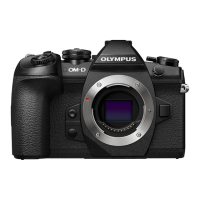
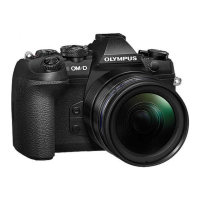
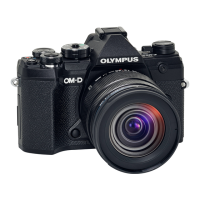

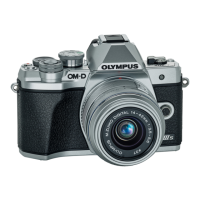


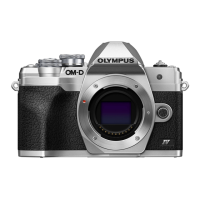
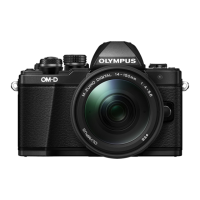
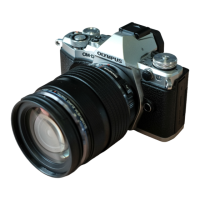
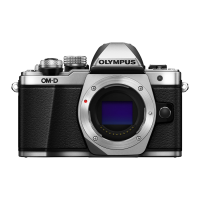
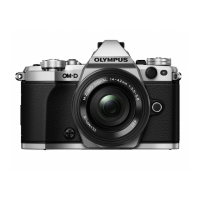
